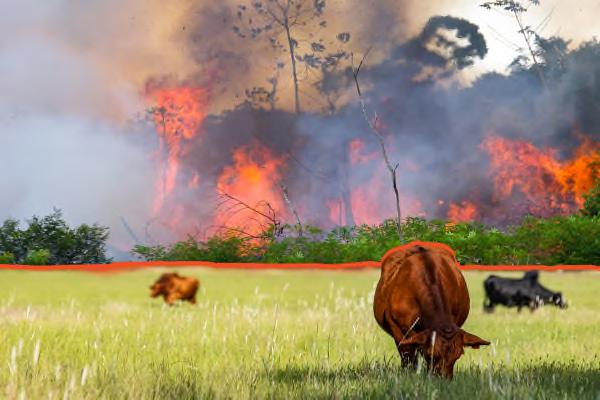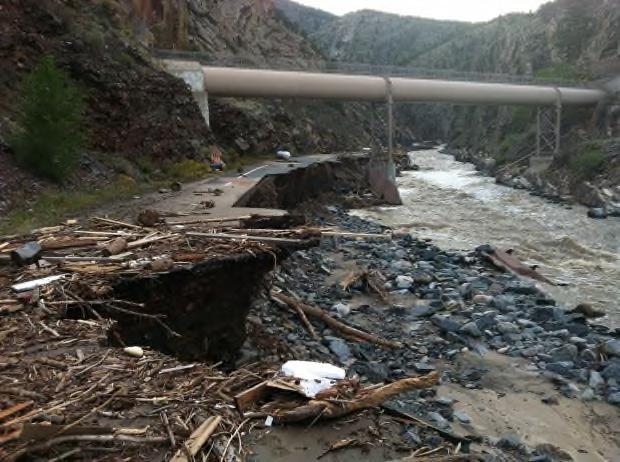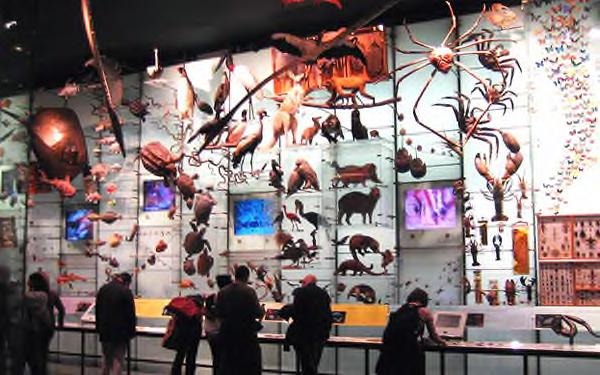
14 minute read
Forests and Climate Crisis - Rod Burns
Certified Professional Heritage Interpreter. InterpNEWS Canadian Editor
bpc@connected.bc.ca
Advertisement
Are Forests in crisis because of changes in our climate, or is the Climate in crisis due to changes in the worlds’ forests?
Exploring: Forests are in Crisis due to changes in the Global Climate.
The most often heard phrase, within my information sources is the level of Carbon Dioxide C02 needs to be lowered in the next 50 years or we will have an overheated planet.
As C02 increases in the earths atmosphere, so does the worlds average temperature. C02 acts as a heat absorbing and reflective blanket to the incoming Infra-Red energy waves coming from the sun. Researchers now commonly state “The consequence of a 4 degree C increase, above the worlds average, will lead to the extinction of most species of life, known on the planet.”
Corporate Foresters appreciate the increase in C02. Carbon accumulation ie. “Sequestration” is the dominant chemical / molecule in all plant materials. A trees accumulated fiber growth is almost pure Carbon from root tips to crown leaves and or needles. Thus with increased C02 in the air, trees will inhale more per day, thus putting on more fiber over the year, over their lifetime.
Foresters have scientific evidence to convince the public of the benefits of increased C02. Indeed, reports which I have read do state and confirm that from 1970 to about 2010, forests have been growing faster, taller, wider, than at any other time, going back centuries. The excessive growth has paralled the increase in C02 from 1950 to 2015, going from 270 ppm to 350 and to 415 ppm, in 2018.
While the Carbon goes into building the cell structure of trees and all other vegetation, the released O2 (oxygen) is the key chemical needed to keep warm and cold blooded animals breathing. So, as trees continue to grow, they pump out more Oxygen (O2) for us to breath
With the coming of the Industrial revolution, mid-1700’s, the burning of coal and later gas and oil, there has been a relative balance in production / consumption between C02 and Oxygen (O2). At approximately 415 ppm we have increased the level of C02 by about 80% above the historic balance of 275 p.p.m. now.
The Forest Companies which planted The Forest Companies which planted their 2nd growth trees had calculated profitable tree harvests could growth trees had calculated profitable tree harvests could happen in the 60 - 80th growth year. The plantation trees have put on a greater volume than expected because growth year. The plantation trees have put on a greater volume than expected because of the increased amount of CO2 in the post 1960’s atmosphere. The fibers ar of the increased amount of CO2 in the post 1960’s atmosphere. The fibers are not construction grade. When e not construction grade. When turned into pellets, as an alternative fuel to coal, for powering thermal generators, they earn a company good turned into pellets, as an alternative fuel to coal, for powering thermal generators, they earn a company good profits. The United States and Canada export shiploads of pellets, internationally. Tree based bio profits. The United States and Canada export shiploads of pellets, internationally. Tree based bio-fuels in many countries have replaced coal burning as a cleaner, less polluting source of thermal energy for the countries have replaced coal burning as a cleaner, less polluting source of thermal energy for the production of electricity.
Original natural forests, with trees from 100 to over 1,000 years of age, =Carbon Sinks, have been given the Original natural forests, with trees from 100 to over 1,000 years of age, =Carbon Sinks, have been given the positive status of “Carbon Sinks”, The forest companies argue that cutting original old growth trees is good Carbon Sinks”, The forest companies argue that cutting original old growth trees is good for the environment and for an economy. Win win! The Old Fiber gets a much higher market price, when for the environment and for an economy. Win win! The Old Fiber gets a much higher market price, when marketed as house frames to furniture and window frames. Old Gro marketed as house frames to furniture and window frames. Old Growth lumber has a much higher engineered wth lumber has a much higher engineered strength, than 60 year old trees. This is critical for constructing homes, offices and related commercial spaces. strength, than 60 year old trees. This is critical for constructing homes, offices and related commercial spaces. In addition, as these wood framed homes and furniture u In addition, as these wood framed homes and furniture used that the C02 held in the lumber, is like mo ed that the C02 held in the lumber, is like money in a long term deposit account. Its’ value is in not releasing C02 and heating up the atmosphere. a long term deposit account. Its’ value is in not releasing C02 and heating up the atmosphere.
Forest Industry companies thus argue that young forests, in their vigorous growth take more C02 out of the Forest Industry companies thus argue that young forests, in their vigorous growth take more C02 out of the atmosphere than the over mature forests. The y atmosphere than the over mature forests. The young, quick growing trees it is further argued, by absorbing oung, quick growing trees it is further argued, by absorbing the C02 from the atmosphere it is helping to keep the earth from overheating. the C02 from the atmosphere it is helping to keep the earth from overheating.
Exploring: Climate Crisis due to changes in the Forest Utilization Exploring: Climate Crisis due to changes in the Forest Utilization
For decades, students have been taught about the For decades, students have been taught about the Amazon Rainforest climate cycle. Over millennia, the Amazon Rainforest climate cycle. Over millennia, the forest and rain cycle has enabled an ultra diverse animal and plant community. Moisture released by western forest and rain cycle has enabled an ultra diverse animal and plant community. Moisture released by western edge rainforests, was carried in the atmosphere to the east and released as torrential rains. edge rainforests, was carried in the atmosphere to the east and released as torrential rains. The warm air and water quickly turned any dead vegetation into nutrient rich soil. water quickly turned any dead vegetation into nutrient rich soil.
In the past 40 years increasing thousands of square kilometres of Rainforests have been cut down on an In the past 40 years increasing thousands of square kilometres of Rainforests have been cut down on an annual basis. In Brazil 70% of it has been by illegal operations. T annual basis. In Brazil 70% of it has been by illegal operations. The de-treed lands have been converted into treed lands have been converted into pastures for growing forage grasses for beef cattle. Other crops have been palm oil, soya and corn fields. The pastures for growing forage grasses for beef cattle. Other crops have been palm oil, soya and corn fields. The Palm oil is a key ingredient in cosmetics. The soya and corn are significant for feed lot raised beef Palm oil is a key ingredient in cosmetics. The soya and corn are significant for feed lot raised beef cattle. The beef is marketed internationally into the fast food and restaurant industry. beef is marketed internationally into the fast food and restaurant industry.









In the past 20 years, the negative effects of the logged off Brazilian forests have been showing an ugly side a) The rains to the East are less reliable, resulting in near drought conditions thus decreased crop yields. b) without the annual decay of forest plants, the soils become nutrient poor. Poor soils lead to decreased nutrition and crop tonnages with each harvest. It has been known for over a hundred years, that within 5 years, the once healthy rain forests become nutrient poor agricultural fields. The ranchers and crop farmers are thus forced to clearcut another section rainforests, to maintain their farm incomes(*verified by discussion with an international animal slaughter business owner).
Climate Change, Forests and Watersheds
Obtaining regional, state and national reports on this topic only takes a few minutes doing an internet keyword search before at least a dozen newspaper articles, scientific reports and university studies are compiled.
Watersheds, globally in the past 40 years have shrunk massively while sea levels have risen. Extreme rainfall and wind events are being experienced every few years instead of every few centuries. (India – S E Asia Monsoons – June 2020) Extreme weather events are expected to increase through the 2020’s and beyond (United Nations Food and Agriculture of the United nations / REDD, Working Paper 15, January 2017).
Globally, reports suggest that approximately only 30% of the worlds original forests remain. 2nd and 3rd tree crop harvesting have become the norm, post 1950. Where original trees in a natural forest can exceed 1,000 years, modern 2nd growth, planted tree farms, are harvested anywhere from 35 to 80 years. Clearcut forest valleys and slopes appear on Google Maps, like a string of pearls. In this comparison however, the cut blocks might be 10 hectares. Strung together they cover thousands of hectares. In a county or state they might total millions of hectares.
New Forest Watersheds and Climate Change A 2nd growth forest is defined as an expanse of land, which is replanted within a few years of the original natural forest being cut and which itself will be harvested in 35 – 80 years.
Studies have now documented how water management in 2nd growth forests is so extremely different from intact natural forests.
In the first 3 – 5 years, the seedlings are exposed to the direct sun and winds. With temperatures 15 C hotter than in the shade of other, older trees, the seedlings exhale much of their needed moisture. At the same time the soils, holding the seedlings, once when in the shade, normally acting like a sponge, quickly dry out. When rains do fall onto the seedlings, they and the soils beneath them are unable to soak up the moisture. This results in flash floods and landslides. In locations where snows accumulate, the young trees have a darker canopy colour than the natural forest. The dark colour heats up quickly in the Spring sunshine. Flash floods rip down the slopes and valleys. Where the rain and snow melt events in natural forests can take months, 2nd growth forests go from wet or snow covered to hot and dry in a few weeks. On average the 2nd growth hot / dry cycle lasts 15 – 20 years.
In the total watershed, modern forestry is clear cutting every 35 – 80 years. Combine temperatures 15 C hotter than in a natural forest with a dried out forest floor, severe lightening strikes are being registered. The lightening, upon hitting dried out forest tinder and equally dried trees explodes into forest fires at sizes and temperatures not found in natural forests. Fire reports in 2nd growth forests have been found to burn a temperatures 100’s of degrees hotter than crown fires, normal in a natural – multi -aged forest. The extreme temperatures burn up any forest organic matter, leaving slopes sterile, unable to grow a new forest.
Importantly, the forest duff and burned young forest trees release CO2 at rates stripping away any gains that Importantly, the forest duff and burned young forest trees release CO2 at rates stripping away any gains that might have been accruing as the trees were might have been accruing as the trees were growing.
Climate Change, Forests, Watersheds and Animals Climate Change, Forests, Watersheds and Animals (terrestrial and aquatic) Eight to Ten thousand years ago, as the earths climate warmed, the Ice Age melted away, Eight to Ten thousand years ago, as the earths climate warmed, the Ice Age melted away, great migrations took place over the ensuing thousands of years. Growing season increased across continents. Primitive took place over the ensuing thousands of years. Growing season increased across continents. Primitive mosses, shrubs, trees and animals moved into hospitable, life supporting regions, previously covered by mosses, shrubs, trees and animals moved into hospitable, life supporting regions, previously covered by kilometer deep ice. Fungi were able to dissolve chemicals in rocks, which the plants could use for their life ble to dissolve chemicals in rocks, which the plants could use for their life cycles. With healthy plants insects found vegetation to eat. Large herbivore animals such as buffalo and cycles. With healthy plants insects found vegetation to eat. Large herbivore animals such as buffalo and caribou began seasonal migrations. Similarly, birds and insects adapted caribou began seasonal migrations. Similarly, birds and insects adapted their wings and diet to migrate with their wings and diet to migrate with atmospheric wind patterns.
Survival adaptations in small changes took place over thousands of years. Scientists agree that the present Survival adaptations in small changes took place over thousands of years. Scientists agree that the present increases in temperatures and winds are forcing changes in less than 20 years what previously had taken increases in temperatures and winds are forcing changes in less than 20 years what previously had taken thousands. Specific high altitude wind patte thousands. Specific high altitude wind patterns help migrating birds by bringing the birds into feed marshes rns help migrating birds by bringing the birds into feed marshes and flower meadows for just when tree blooms open and food insects hatch. and flower meadows for just when tree blooms open and food insects hatch. Watersheds, which flushed weeks earlier, came and went before fish eggs hatched, releasing their smolts. Watersheds, which flushed weeks earlier, came and went before fish eggs hatched, releasing their smolts. Without the newborn fish, early arriving species birds die of hunger. Warmer winters have enable larva of e newborn fish, early arriving species birds die of hunger. Warmer winters have enable larva of Pine Bark Beetles to survive. As healthy adults, they have flown and have been blown into natural and 2 Pine Bark Beetles to survive. As healthy adults, they have flown and have been blown into natural and 2nd growth forests, laying billions of eggs. Hatched cat growth forests, laying billions of eggs. Hatched caterpillars have chewed their way across 2 erpillars have chewed their way across 2nd growth forests, about to be harvested. In NE African countries conditions have enabled generations Locust to crawl, fly and about to be harvested. In NE African countries conditions have enabled generations Locust to crawl, fly and chew their way through agricultural crops and forested lands. chew their way through agricultural crops and forested lands.
Aquatic conditions are no less going through extremes, directly related to changes in Forests and Climate. less going through extremes, directly related to changes in Forests and Climate. Higher temperatures are evaporating morning dew off leaves, before the moisture is able to drop to the forest Higher temperatures are evaporating morning dew off leaves, before the moisture is able to drop to the forest floor. Moisture from leaves is carried aloft by the warm winds. floor. Moisture from leaves is carried aloft by the warm winds. At higher altitudes the moisture condenses At higher altitudes the moisture condenses into massive, yet localized rain fall events. The rainfall flash floods down valleys. into massive, yet localized rain fall events. The rainfall flash floods down valleys.
In other cases, the warmer rains do fill up the streams. The problem is the water is a few degrees warmer than In other cases, the warmer rains do fill up the streams. The problem is the water is a few degrees warmer than the insects, amphibian eggs and fish eggs can handle during their incubation weeks. Massive die offs of mphibian eggs and fish eggs can handle during their incubation weeks. Massive die offs of aquatic species are happening globally due to warmer waters. The die offs of a species is multiplied up the aquatic species are happening globally due to warmer waters. The die offs of a species is multiplied up the food chain. Hunger is happening globally. Migrations are food chain. Hunger is happening globally. Migrations are happening globally. Conflicts over dwindling happening globally. Conflicts over dwindling water in ponds, streams and aquifers are increasing. water in ponds, streams and aquifers are increasing.











